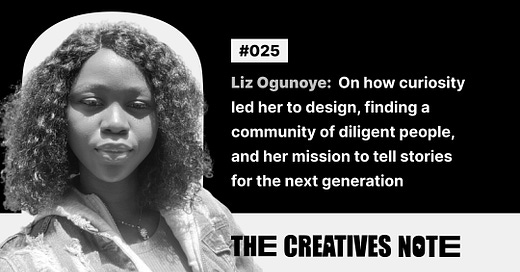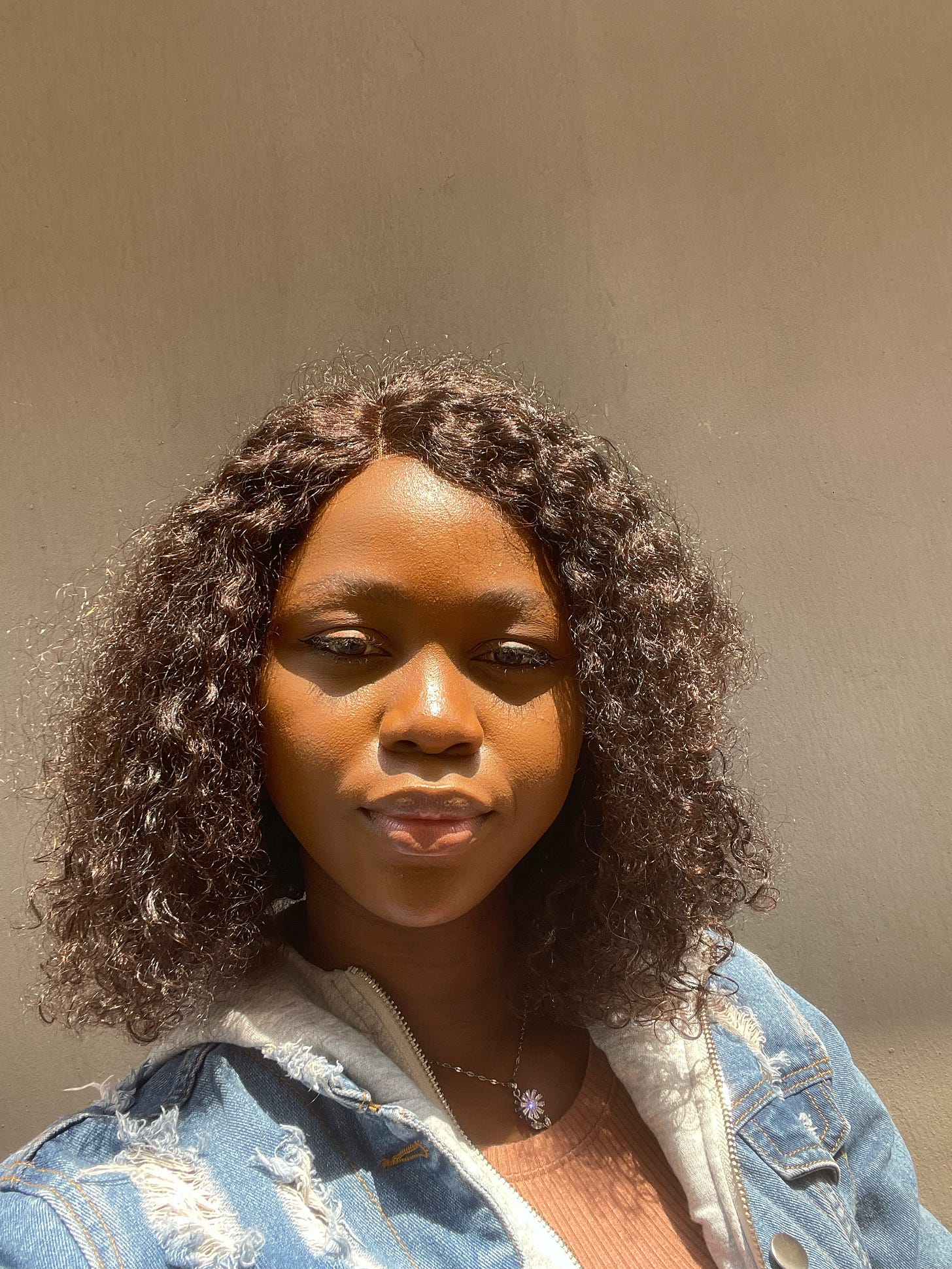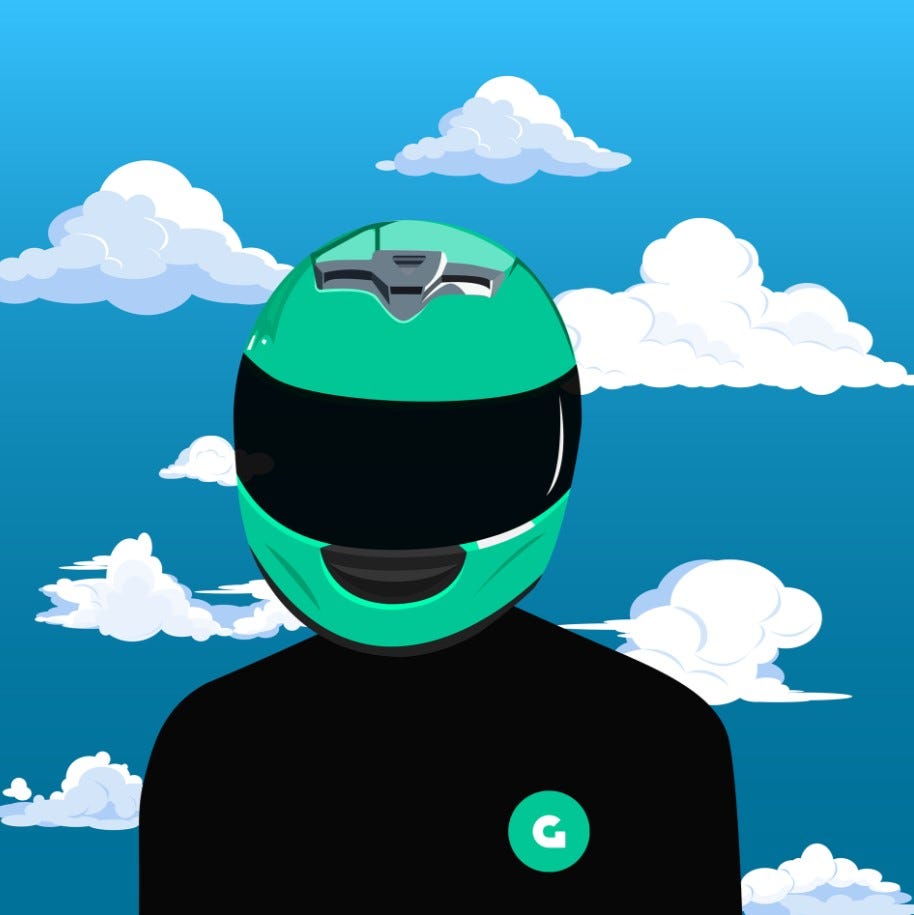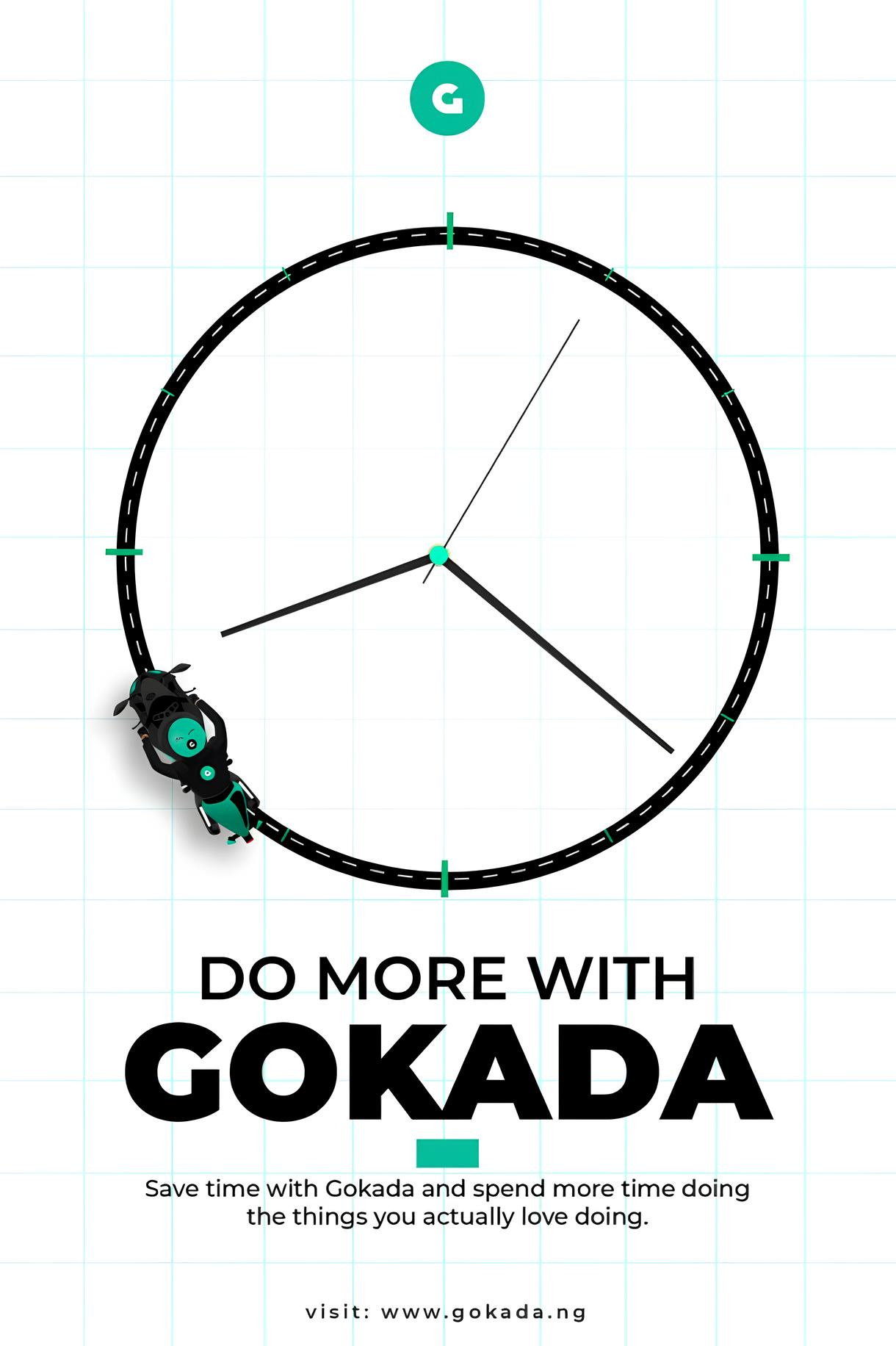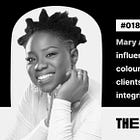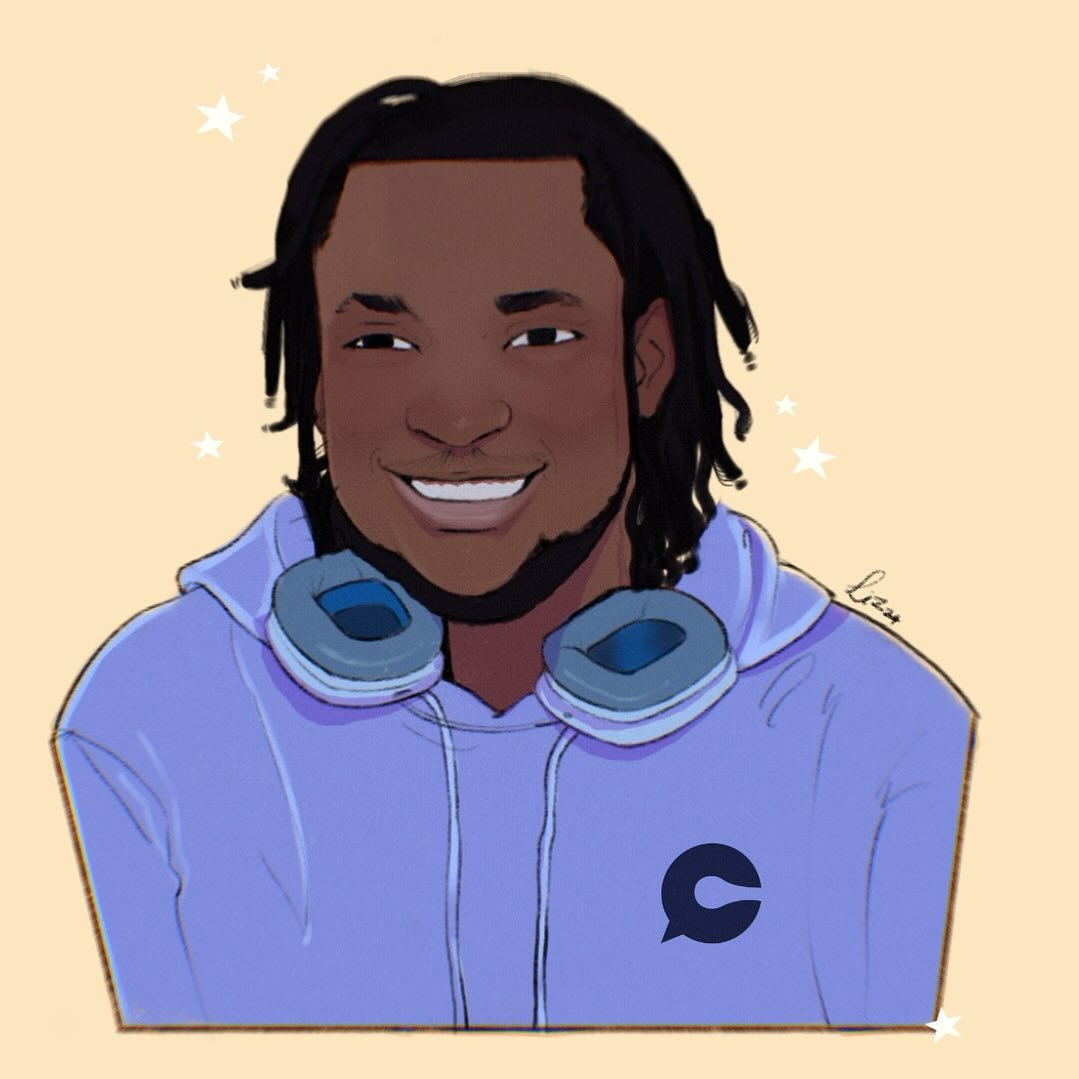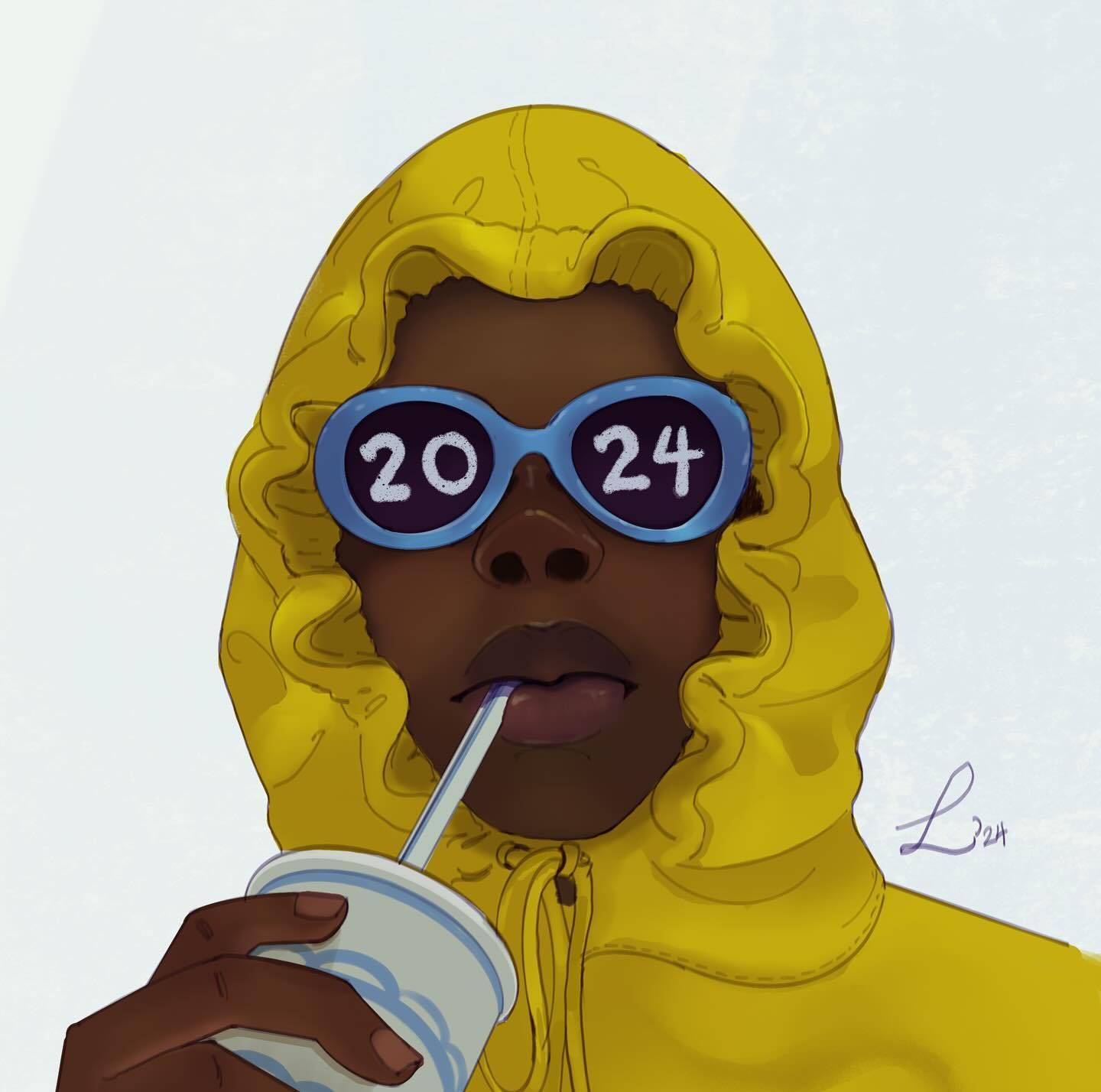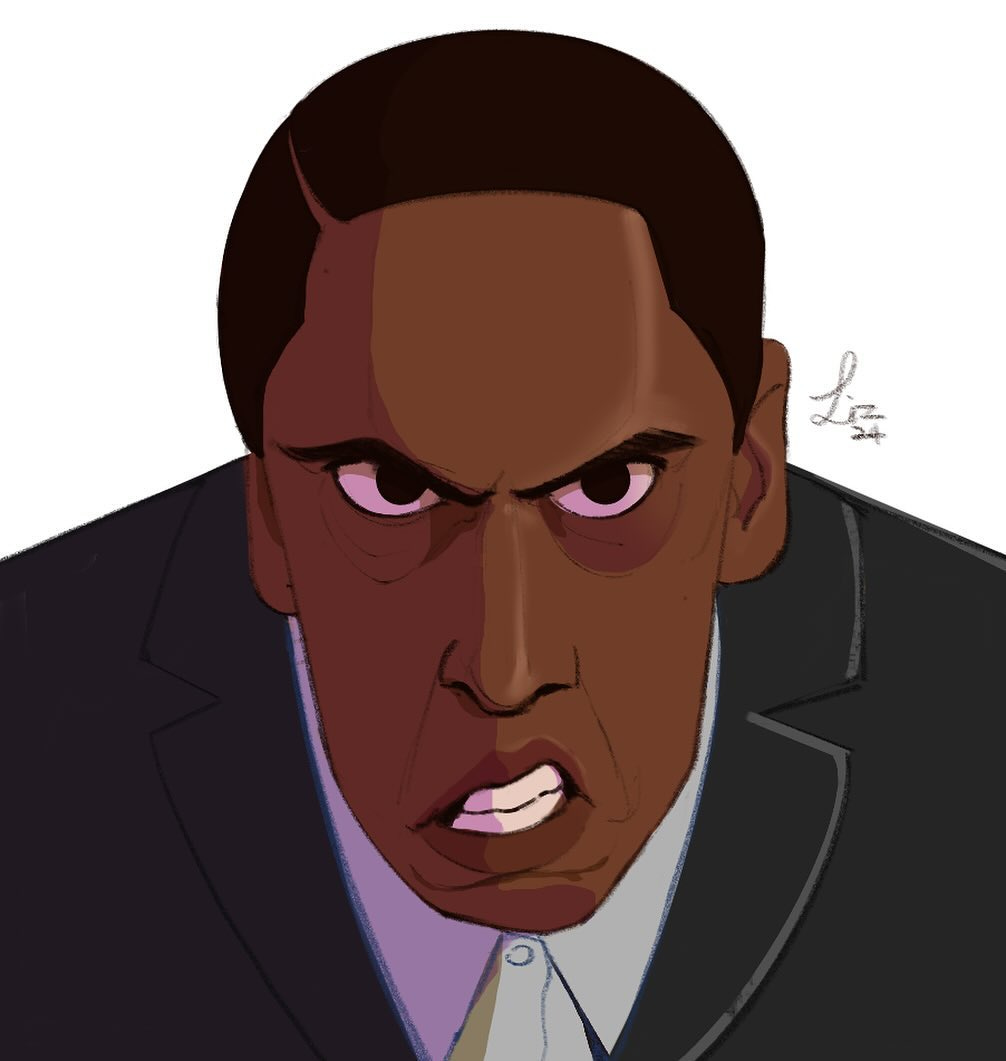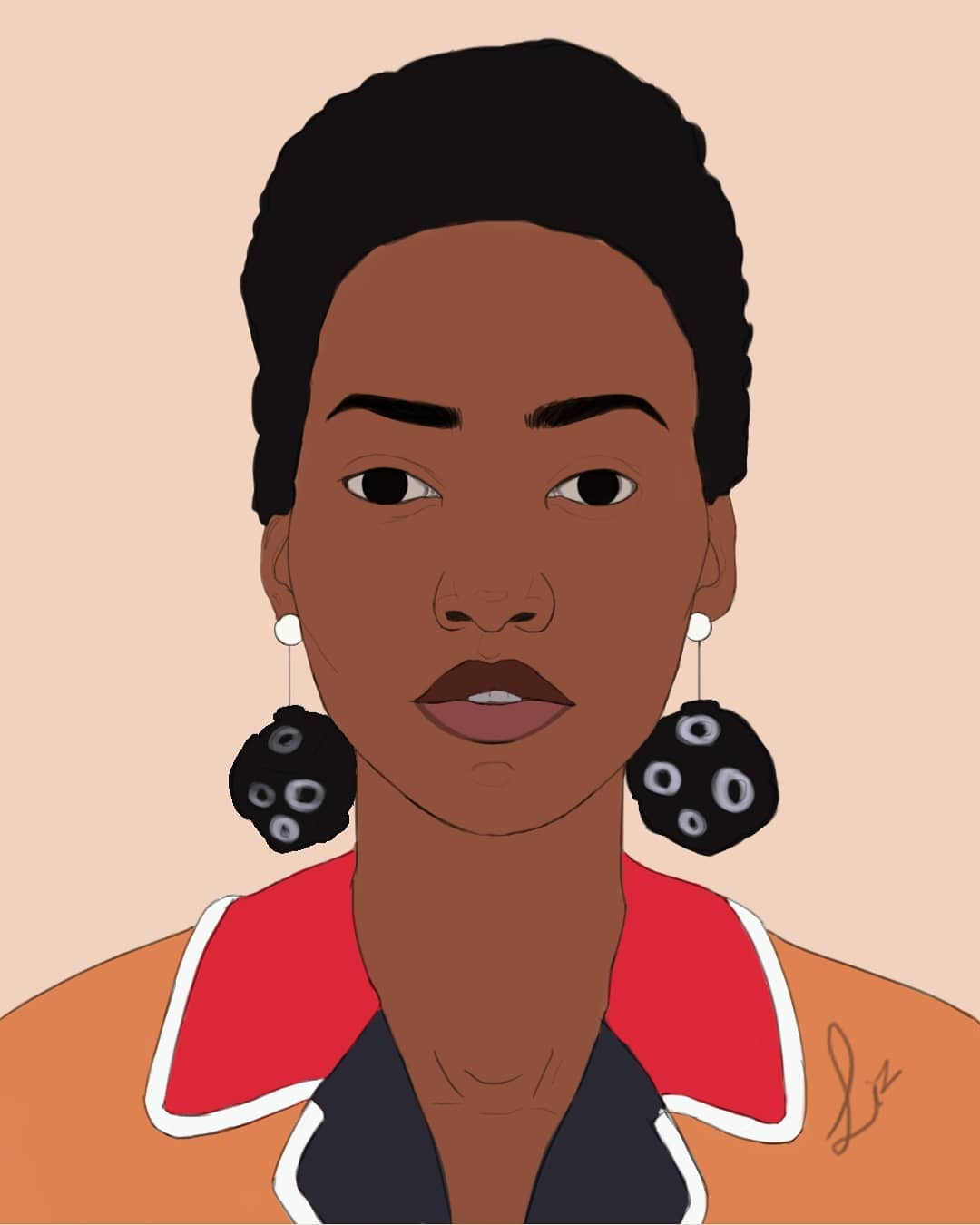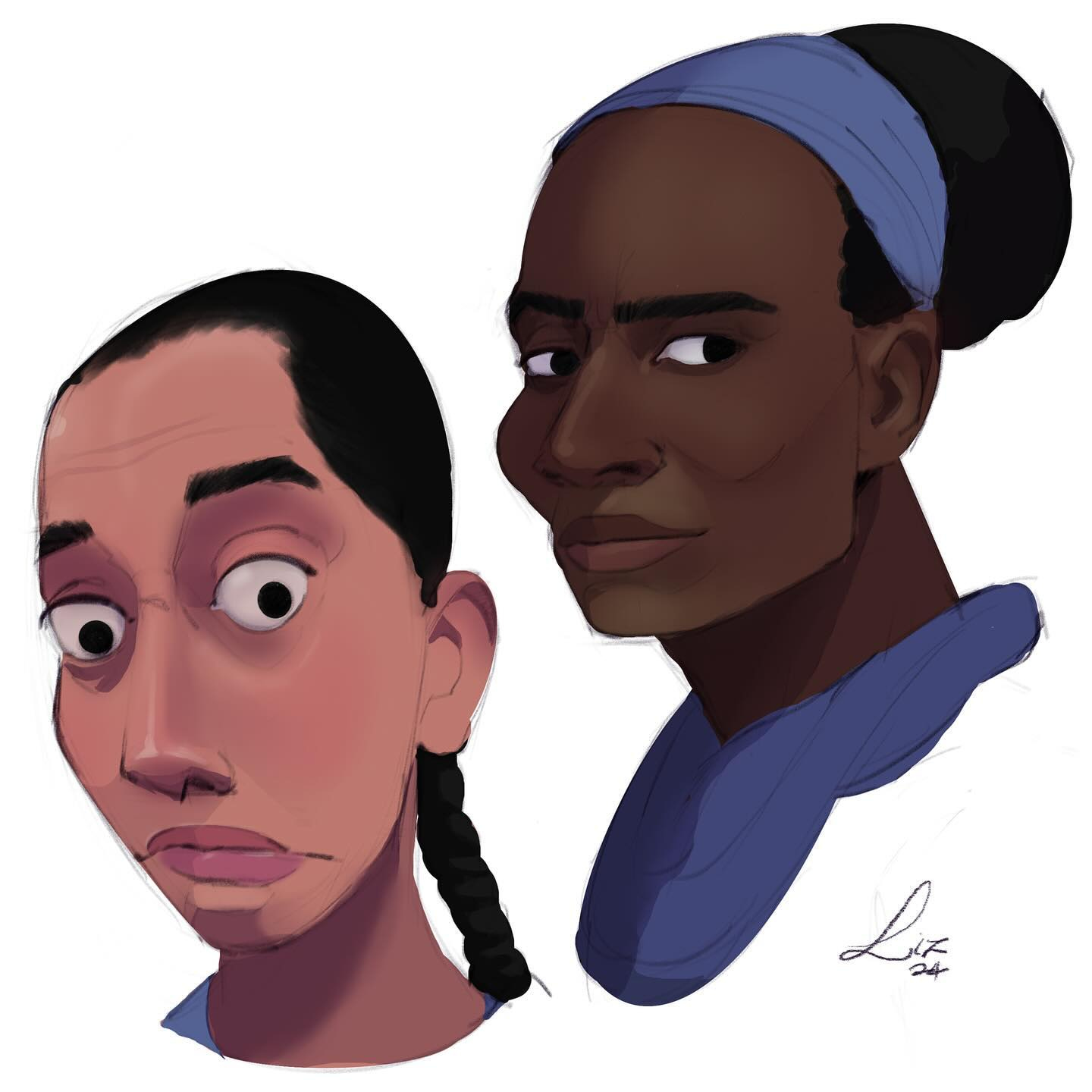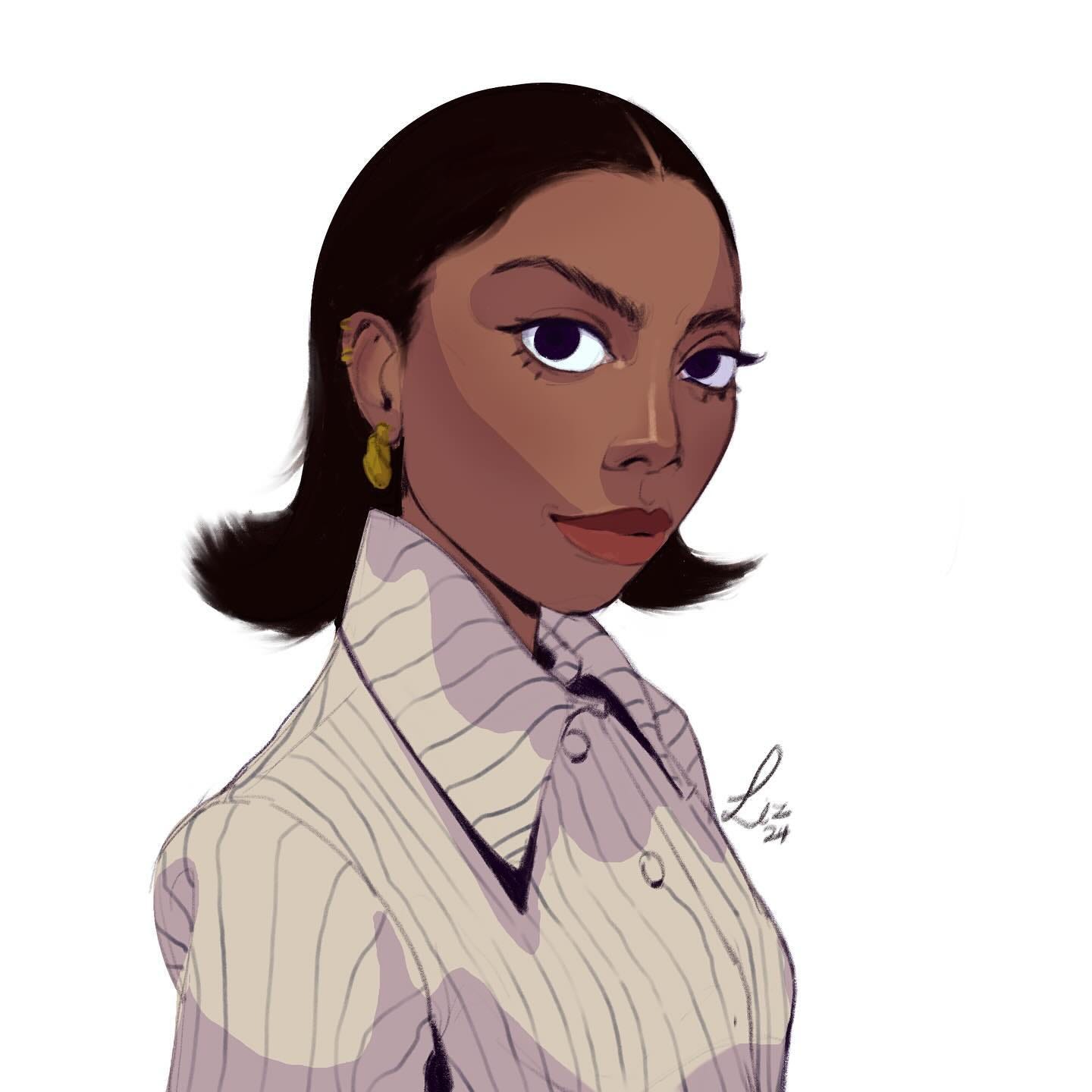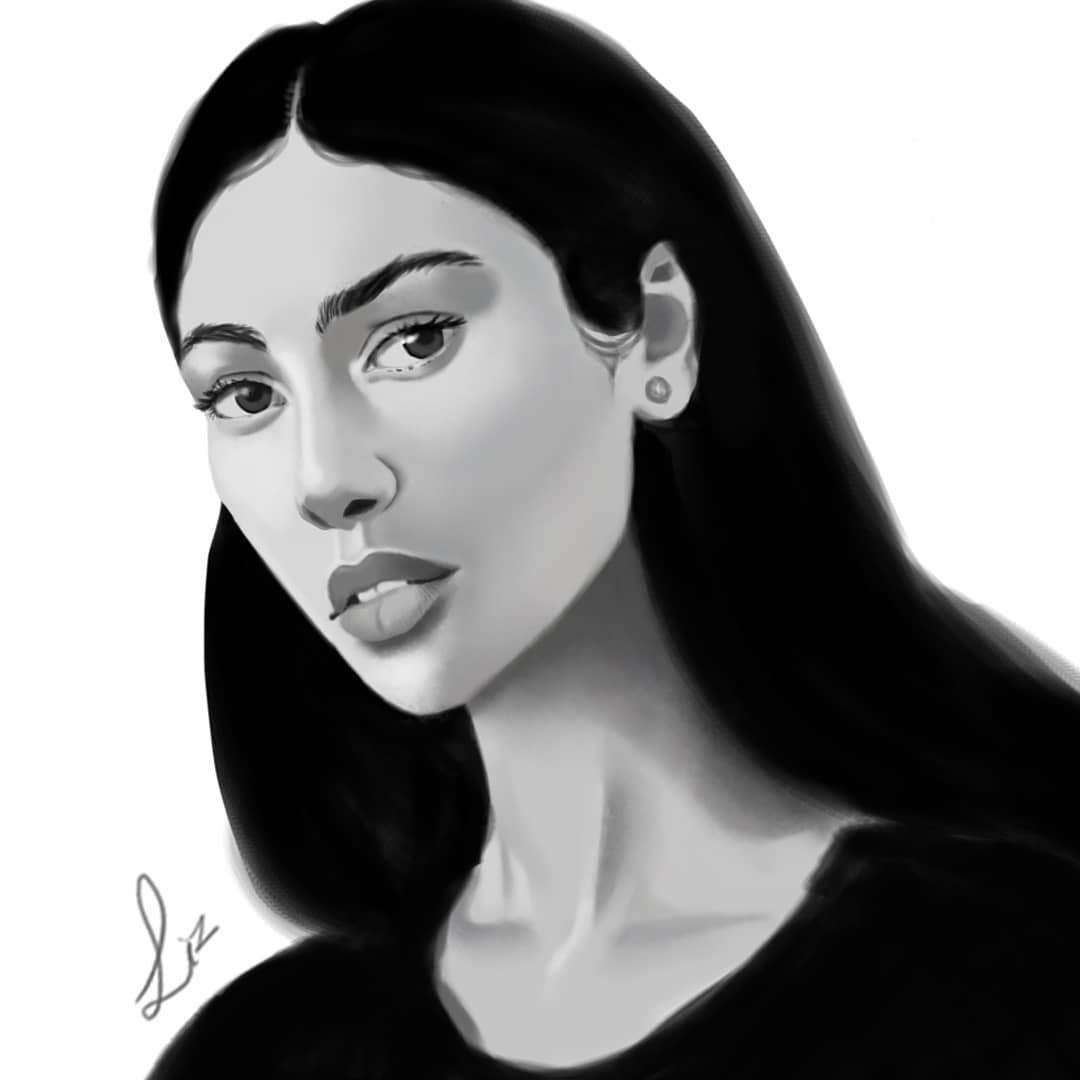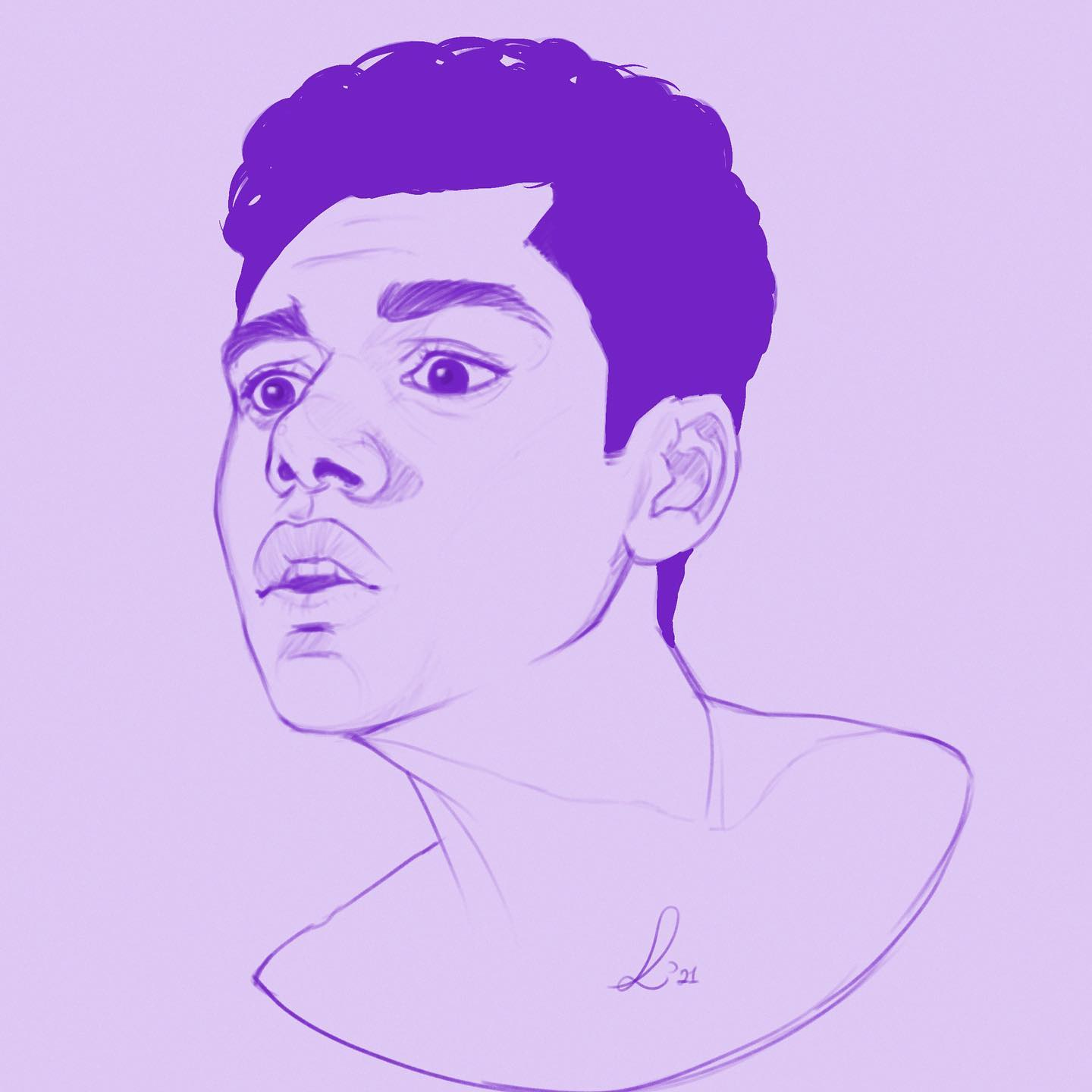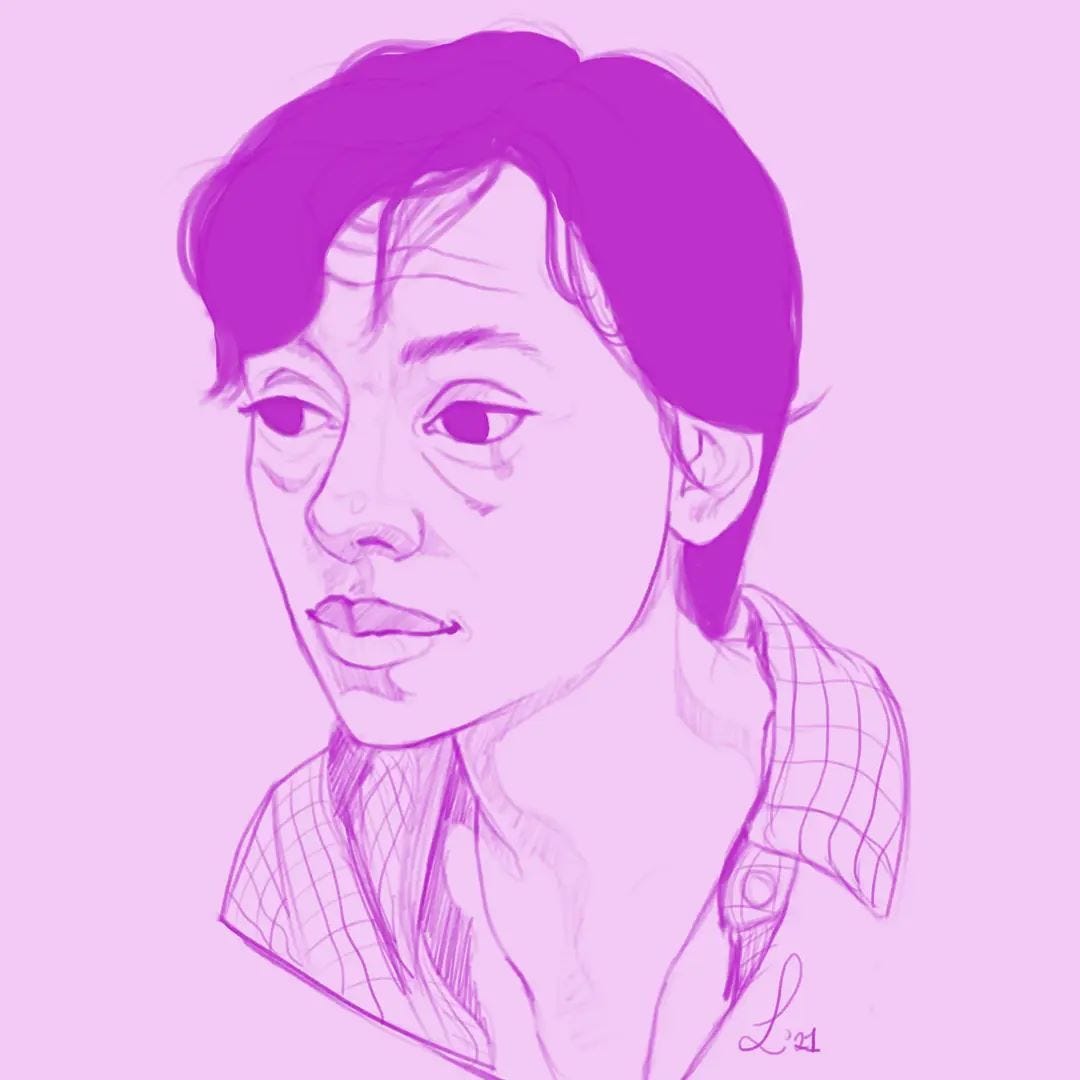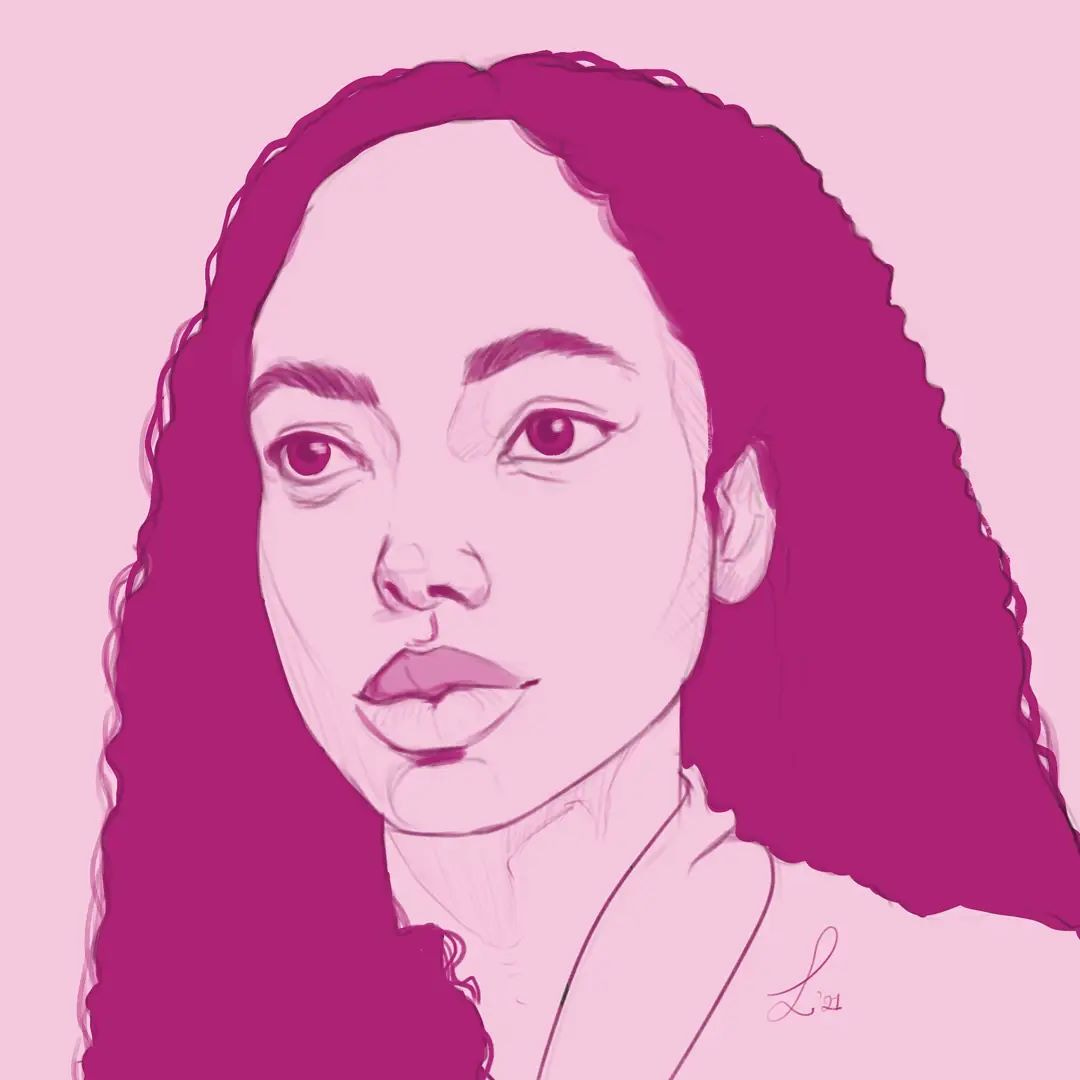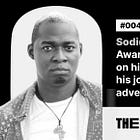Liz Ogunoye: On how curiosity led her to design, finding a community of diligent people, and her mission to tell stories for the next generation — #025
"[What motivates me to keep creating] changes every now and then, but the theme stays central: At its core, I want to be able to tell stories for the next generation."
Hi, thank you for joining us for another edition of our interview with African Creatives. In this edition, I spoke with Liz Ogunoye, a graphic designer, digital illustrator and artist, who currently works as a brand designer and illustrator at Chowdeck, a Nigerian technology company that provides logistics services to both vendors and consumers.
In the last 5 years, she has worked in a marketing agency, a print agency, a fintech, and different startups as a designer while also taking on freelance projects.
In this interview, you will get to know what led her to design, how she got started, what keeps her going, the challenges she faces as a designer and how she navigates them, the people who inspire her, and the people she would love to collaborate with on a project. You will love and enjoy reading this!
Tell us about yourself
My name is Liz Ogunoye. I am a graphic designer, digital illustrator and digital artist.
I have been in design for about 5 years and in that time, I have worked in a marketing agency, a print agency, a fintech, and different startups; it's been an interesting run. These days, I lean more into my illustrative side.
Currently, I work at Chowdeck as a brand designer and illustrator.
When I am not working, I spend my time watching animations and reading African fiction.
Interesting! How did you get started with design? What led you to a career in design?
It was not an intentional decision. My first introduction to design was in my first year at uni during a skill acquisition program in my fellowship. There was bead-making, hairdressing, design and other skills to choose from. I first chose bead-making, but I was curious about what design was, so I signed up for both design and bead-making. There, I was introduced to design principles and Coreldraw. After that, I kept tinkering around Coreldraw.
In my second year, I learnt about digital art. There was a buzz around digital art at the time, so I was interested because I could draw; I used to draw when I was younger. I learnt that I would need to get a tablet and use Photoshop, so I wanted to learn Photoshop.
Around that time, I learnt about a design training by a design group called Campace. I registered for the training and during the training, I learnt more about design; that was where I got a proper introduction to design. My project at the end of the training was to design a book cover—which earned me the first position at the end of the training.
After the training, I interned at Printivo, a print agency, where I learnt about a lot of things. And I have continued to design and grow from then on.
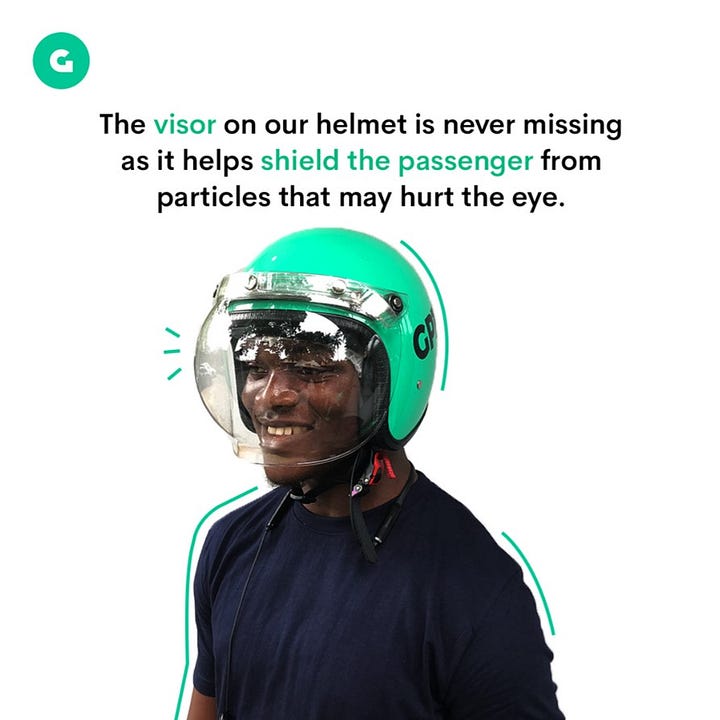
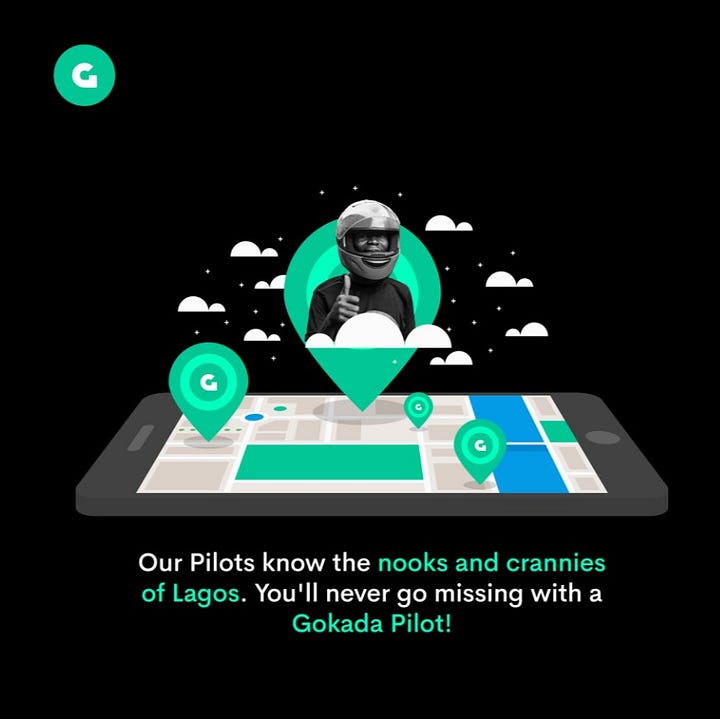
How would you describe the journey and your experience so far?
It has been interesting and really chilled.
I didn’t mean to do design full-time, but I learnt it from an interesting group of people who are diligent and prone to excellence. At Campace, we had talks on different aspects of design every other weekend.
Before graduating I got gigs that my colleagues were kind enough to refer me for. And when I left uni, I went to work at Gokada. After Gokada, I worked at a marketing agency and then a fintech before ending up at Chowdeck. In between all these roles, I was working on freelance projects as well.
I was fortunate enough to be with a very nice community of people sharing knowledge and things they were doing. It was cool.
When did you decide to go full-time into design?
That would be after learning about design properly at Campace. It was really interesting to learn and work with cool people. Also, the fact that my book cover project earned me the first position at the end of the training made me feel like it was something I could become good at.
I also found it interesting that design tied into something I was keen on; I used to draw and make comics and storybooks when I was in primary and secondary school—and learning about design sort of fed that side of me.
I was even more hyped because people were willing to pay for my work.

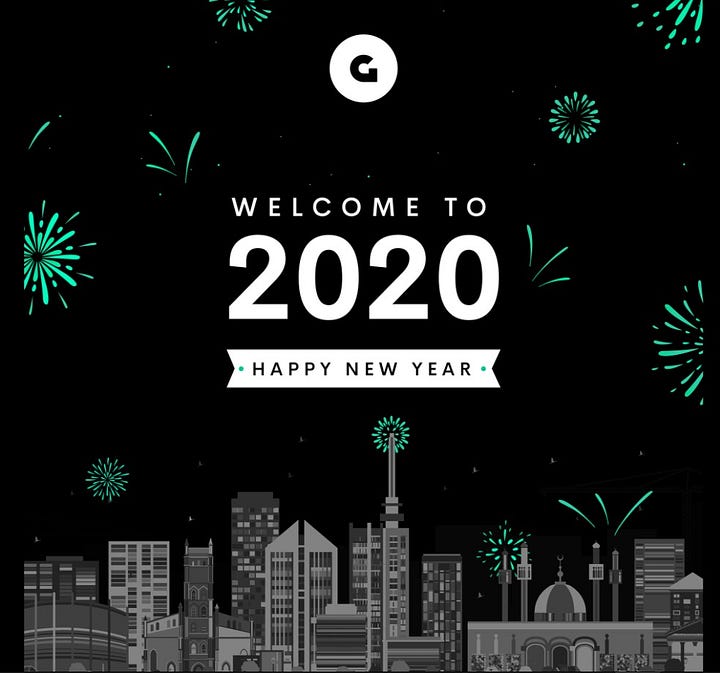
How would you describe what you do to a five-year-old?
I draw and colour things.
What is your day-to-day routine? What does a typical day look like for you?
No day is the same. At the time of this conversation, I don’t have a set routine but maybe later on.
Currently, I mostly work from home but sometimes I go to the office. So, on most days that I work from home: I wake up, eat, work, and rest.
What do you enjoy most about what you do?
The most interesting part of both worlds—of design and illustration— is that you stare at a blank canvas and make something out of it.
The saying, “I saw the angel in the marble and carved until I set him free,” by Michelangelo captures the feeling. That is, looking at a blank page and bringing design and illustration out of it.
Related Interview
What is the best career investment you have made as a creative?
I don’t think it’s one thing. I think it’s a series of decisions and investments.
The first one would be deciding to pay for the Campace training because it was a lot of money for me at the time as a student. But deciding to pay and learning has proven pivotal.
Another one would be my dad giving me a laptop. For the first training—which was organised by my fellowship in my first year on campus—I didn't have a laptop but when I got home after that training, my dad, without any prior conversation, was like, ‘I got this laptop, I think it will be useful for you.’
Taking gigs when I didn’t think I was capable enough is another one. Deciding to take up gigs when I was not ready or sometimes taking risks by accepting some projects. For example, there was a time I took a gig that required me to be out of school for some time. I took the gig and learnt a lot about being in a team. It was there I also learnt how to use Photoshop properly.
On the financial end, it will be investing in courses and work gear.
Being a part of a community—the Campace community—and having to give back to the community is another important investment.
What are some of the challenges you face as a designer?
Early on, it was skilling up and not having a good device; my laptop at the time was really slow.
Another challenge at the beginning would be getting my people at home to understand what I was doing. Their worry was not out of anything bad, it was just out of care for how I would survive. So getting them to understand what I was doing was profitable took time.
But right now, one challenge will be not skilling up fast enough. There’s so much to learn and create.
Another challenge will be sharing and talking about my work. I don’t do that enough.
Read Also: How To Build Meaningful Relationships As A Creative
How did you navigate these challenges?
For all that I lacked, I had friends. For example, a friend gave me my first tablet. I had another friend I could go to for feedback and tips.
The challenge on the family end was sorted when I started contributing at home. There was one time my mom called me to ask me how I was doing because I stopped calling home for money.
Also, resuming straight to work after uni helped them understand that what I was doing was serious. And when the pandemic happened and I had to start working from home, they saw me in front of the laptop always.
What is your workflow and creative process like?
Early on, after a client explained what they wanted, I would just ghost them and come back with the result, but that has changed.
Now, my process starts with an extensive conversation with the client, where I try to understand the brief and expected output from the project.
After getting the whole idea of what they want, I go back to check for ideas I have seen in the past or just check for similar works that are related to what the client wants. I also find inspiration on Pinterest; I basically research and look at how the brief has been addressed in the past.
During the research process, I get an idea or two I want to explore. So I develop it and come to the client with the first draft—a sketch of the idea—for feedback.
After their feedback, I go on with the direction and come back with an improved draft for feedback until we have the final output.
What part of this process do you enjoy the most?
That would be the research process because it gives me more insight into the project and also shows me new things I didn’t know. I sometimes get ideas I may use some other time.
What are the essential gadgets, tools, and software you use for work daily?
I work mostly in Photoshop, Illustrator, and Figma on my Macbook. I use a Wacom Tablet and an iPad for drawing.
How did the COVID-19 pandemic and lockdown impact you and the work you do as a creative?
The lockdown for me was a blur; it just went by. At the time, I was working at a marketing agency and it was my first experience working remotely, so it was a bit tough because the internet service providers were really bad and slow during prime work hours and there was also an issue with the light and a whole lot of other issues.
I was always working and at some point, there was a bit of despair but after the lockdown, I decided to move on from the agency.
How do you handle creative blocks and client pushbacks as a creative?
For creative block, I sleep or eat. And in a situation where it gets prolonged, I take a break, lounge around, see movies, and mindlessly scroll through Pinterest—this can trigger something in me to create something magical.
Another thing I do is talk to my friends; this is like free therapy. I ask questions until we get to the root of it.
I have also learnt to communicate with my colleagues and they are very chilled and cool. Sometimes they get on a call with me to try to help and we figure things out.
For pushback from teammates, I always make sure they are clear and straightforward so it is easy to address. But for clients who can’t clearly state what it is, especially for digital illustration and art projects, I get opinions from other people—artists and non-artists—because they may see something or make a comment that will help.
What is the task you don't enjoy doing but you have to do?
There's nothing. I may be apprehensive at first but I will get used to it.
What are some of your favourite projects you have worked on?
I can’t pick right now because each project has different stories. And it feels like asking a parent to pick the child they like the most. (laughs)
How do you stay creative and motivated to keep creating?
It changes every now and then, but the theme stays central: At its core, I want to be able to tell stories for the next generation.
I usually say I grew up watching Disney and DreamWorks movies and cartoons with really nice stories of love and bravery. And I want to be able to do that for the next generation of kids through books or comics and be able to sustain stories that are more Nigerian; it's what keeps me going.
When I feel frustrated, I watch what others are doing and I am inspired to want to contribute to see that these stories are told.
How do you relax and have fun?
I watch movies and stay indoors. I am not very outdoorsy.
Who are the creatives that inspire you?
Ola Agunbiade, Adxnna, Toyin Ajetunmobi, Segun Samson, Olajide Ajayi.
Who are the creatives you would love to work with or collaborate with?
Adxnna and Segun Samson
What brands would you love to work with?
Skydance Animation and Blue Zoo Studio.
What would you be doing if you were not a designer?
I enjoy teaching or doing something very hands-on where I need to create with my hand.
What advice do you have for someone who is at the early stage of their creative journey?
You don’t have to do it alone but if that’s your vibe, go for it. But you should know that there are a lot of resources and people that can help.
Also, be true to yourself. Know what you like and look for people who do it and reverse engineer their work to understand what they did and how they do it. Break it down, recreate it for learning purposes—not pass it off as yours—and apply what you learnt to your work.
What would you consider success and fulfilment in your career when you look back in the next 20 years?
Working with the finest studios making great animations and being a part of great storytelling.
Whose story would you love to read about?
Damilola Mojid
Read Also
Do you have anything you would like to plug in or promote?
I just want to say, in the words of Taiwo Adeyemi, “These things are possible. All you are thinking about is possible.”
Thank you for sharing with us!!!
Connect with Liz on Twitter, Instagram, and LinkedIn.
Thank you for reading and don’t forget to like and share the interview.
Are you an artist, designer or filmmaker interested in sharing your story on The Creatives Note? Reach out to us via thecreativesnote[at]gmail[dot]com
See you next time!!!
Follow us on Twitter, Instagram, and LinkedIn to stay up to date.


